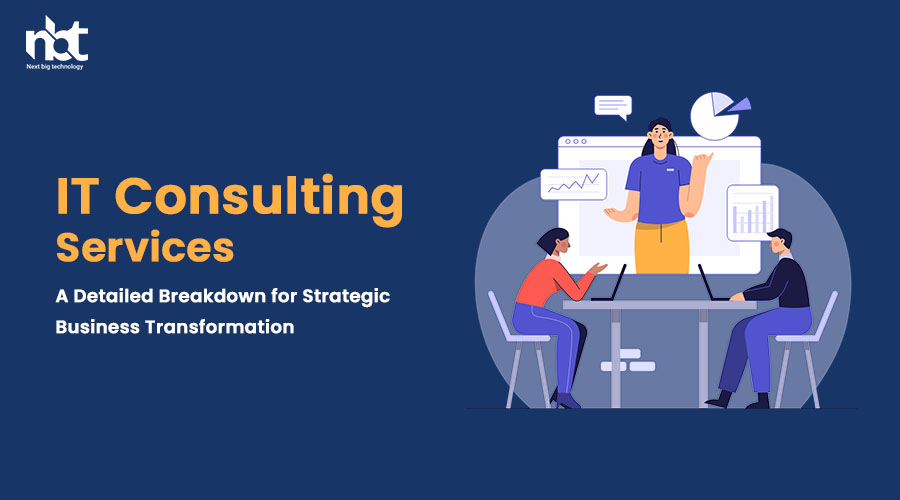Table of Contents
Introduction
In today’s fast-paced and technology-driven business landscape, organizations often require expert guidance to navigate the complex world of information technology. IT consulting services provide invaluable support and strategic insights to help businesses align their IT infrastructure, systems, and processes with their overall goals. In this blog, we will provide a detailed breakdown of the key components and benefits of IT consulting services. Understanding these components will empower you to make informed decisions and leverage technology for optimal business transformation.
IT Consulting Services
-
IT Infrastructure Assessment
An IT infrastructure assessment involves a comprehensive evaluation of an organization’s existing technology systems and infrastructure. Key aspects of IT infrastructure assessment include:
a) Network Analysis:
Assessing the organization’s network infrastructure, including hardware, software, and connectivity, to identify any performance bottlenecks or security vulnerabilities.
b) Systems Evaluation:
Analyzing the organization’s existing systems, such as servers, databases, and storage, to ensure they meet current and future business requirements.
c) Security Audit:
Conducting a thorough security audit to identify potential risks, vulnerabilities, and compliance gaps, and recommending measures to enhance data security.
-
IT Strategy Development:
IT strategy development involves creating a roadmap to align technology initiatives with business goals. Key aspects of IT strategy development include:
a) Business Alignment:
Understanding the organization’s overall business objectives and identifying how technology can support and enable those objectives.
b) IT Roadmap:
Developing a comprehensive plan outlining the technology initiatives, investments, and timelines required to achieve the desired business outcomes.
c) Digital Transformation:
Identifying opportunities for digital transformation and leveraging emerging technologies to drive innovation, efficiency, and competitive advantage.
-
Technology Implementation and Integration:
Technology implementation and integration services focus on the successful deployment and integration of new systems and solutions. Key aspects of technology implementation and integration include:
a) Solution Selection:
Assisting the organization in selecting the right technology solutions that align with their business goals and requirements.
b) System Integration:
Ensuring seamless integration of new systems with existing infrastructure, data, and processes to maximize efficiency and minimize disruptions.
c) Data Migration:
Planning and executing the migration of data from legacy systems to new platforms, ensuring data integrity and continuity of operations.
-
IT Project Management:
IT project management services involve overseeing the planning, execution, and delivery of IT projects. Key aspects of IT project management include:
a) Project Planning:
Defining project objectives, scope, timelines, and resource requirements, and creating a project plan that ensures successful project delivery.
b) Risk Management:
Identifying and mitigating project risks, monitoring project progress, and making timely adjustments to keep projects on track.
c) Stakeholder Communication:
Maintaining effective communication with project stakeholders, including regular project status updates, issue resolution, and change management.
-
IT Support and Maintenance:
IT support and maintenance services focus on providing ongoing technical support and maintenance for an organization’s IT infrastructure and systems. Key aspects of IT support and maintenance include:
a) Help Desk Support:
Providing a dedicated help desk or support team to address end-user IT issues and provide timely resolutions.
b) System Monitoring:
Implementing proactive monitoring systems to identify and resolve potential IT infrastructure issues before they impact operations.
c) System Updates and Patch Management:
Ensuring that systems and software are kept up to date with the latest security patches and updates to mitigate vulnerabilities.
Conclusion
IT consulting services offer invaluable expertise and strategic guidance to help organizations leverage technology for business transformation and growth. By understanding the key components discussed in this blog, including IT infrastructure assessment, IT strategy development, technology implementation and integration, IT project management, and IT support and maintenance, you can partner with experienced IT consultants to optimize your technology investments, improve operational efficiency, and drive innovation. Collaborating with a reliable IT consulting firm will further ensure the successful implementation of your IT initiatives and help your organization stay ahead in the digital age.
Thanks for reading our post “IT Consulting Services: A Detailed Breakdown for Strategic Business Transformation”. Please connect with us to know more about IT Consulting Services.

















